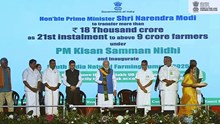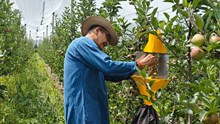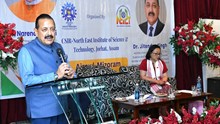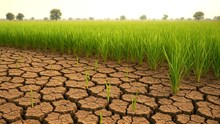
For more than half of the world's population, rice is a staple crop, making its cultivation highly important. Although traditional transplanting is efficient, it is resource-intensive and leads to environmental degradation. Direct Seeded Rice (DSR) is an ancient technique that has recently been revived. In DSR, seeds are sown directly in the field, eliminating the need for the nursery and transplanting stages. Direct-seeded rice involves planting rice seeds directly in the field instead of transplanting seedlings from a nursery.
Particularly in developing nations, it is regarded as an economical, environmentally responsible, and productive approach. DSR can be accomplished through dry planting, water seeding, or wet seeding. This makes it a sustainable alternative to conventional transplanting by reducing labor, water use, and methane emissions. The adoption of DSR requires appropriate cultivars, efficient nutrient management, and weed control techniques. This method not only reduces resource use but also enhances the overall sustainability of rice farming.
Why Should You Adopt This Method!
Direct-seeded rice is motivated by several factors. Traditional transplanted rice demands large amounts of water, with some estimates running as high as 5000 liters per kilogram of rice. As non-agricultural industries vie for an increasing share of the limited water supply, allocations to agriculture decrease. And it becomes increasingly difficult for agricultural practices to compete with the growing costs and scarce labor during peak seasons.
DSR offers a solution as it reduces water and labor, thereby lowering production costs. Further, the technique avoids soil degradation resulting from puddling and can be used for a variety of cropping systems making it a viable option for modern agriculture.
Production Technology of DSR
DSR techniques involve several critical steps. Precise field leveling, which is often achieved through laser leveling, ensures uniform water distribution and optimal seedbed conditions. Sowing times can vary by region, but generally, early June is recommended for coarse rice, while the second week of June suits basmati varieties. Seed drill usage is crucial for maintaining consistent spacing and depth, It is vital for good crop establishment.
Selection of the right rice varieties is essential, with early to medium-duration varieties recommended for light soils and medium-to-late varieties for heavier soils. Seed priming, which involves soaking seeds overnight enhances germination and ensures maximum crop stands. Proper seed treatment with fungicides helps prevent common diseases, ensuring healthy crop development.
DSR technique needs proper irrigation management, that is, less application of irrigation when the crop has just started growing. Strategic application during critical growth periods is adequate. Nutrient management should focus on soil analysis and balanced fertilizers which guarantee maximum growth. Efficient weed management in terms of cultural practices and the use of herbicides is necessary to maintain good yields.
Advantages of DSR
DSR has many advantages over other conventional methods of rice planting. It integrates easier practices of planting at the right time and very early maturity periods. Better crop rotation and increased agricultural productivity follow from this. DSR equally makes possible shorter times for cultivation, energy use, and production, making rice farming very profitable. It also enhances physical conditions in the soil and reduces methane emissions, hence contributing to environmental sustainability.
Challenges and Future Prospects
DSR has challenges despite having advantages such as high weed infestation and the need for effective weed management strategies. Farmers need training on herbicide use to prevent resistance and ensure safe application. Future studies should concentrate on expanding access to contemporary agricultural technology and creating high-yielding rice varieties that are appropriate for DSR. To overcome these obstacles and encourage the broad use of DSR, cooperation between scientists, policymakers, and farmers will be crucial.
Direct Seeded Rice is an alternative to the traditional method of rice cultivation. This is because it can address issues of water scarcity, labor shortage, and environmental impact. The productivity and sustainability of rice farming can be enhanced through DSR. This method has the potential to revolutionize rice cultivation with continued research and support, making it more efficient and resilient in the face of modern agricultural challenges.
















